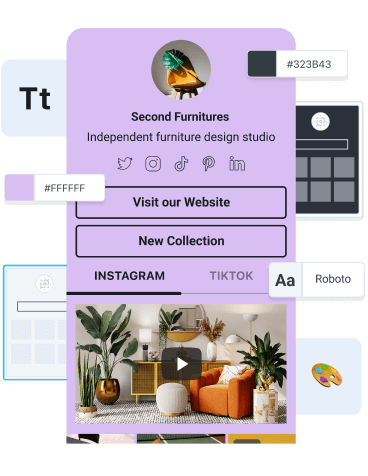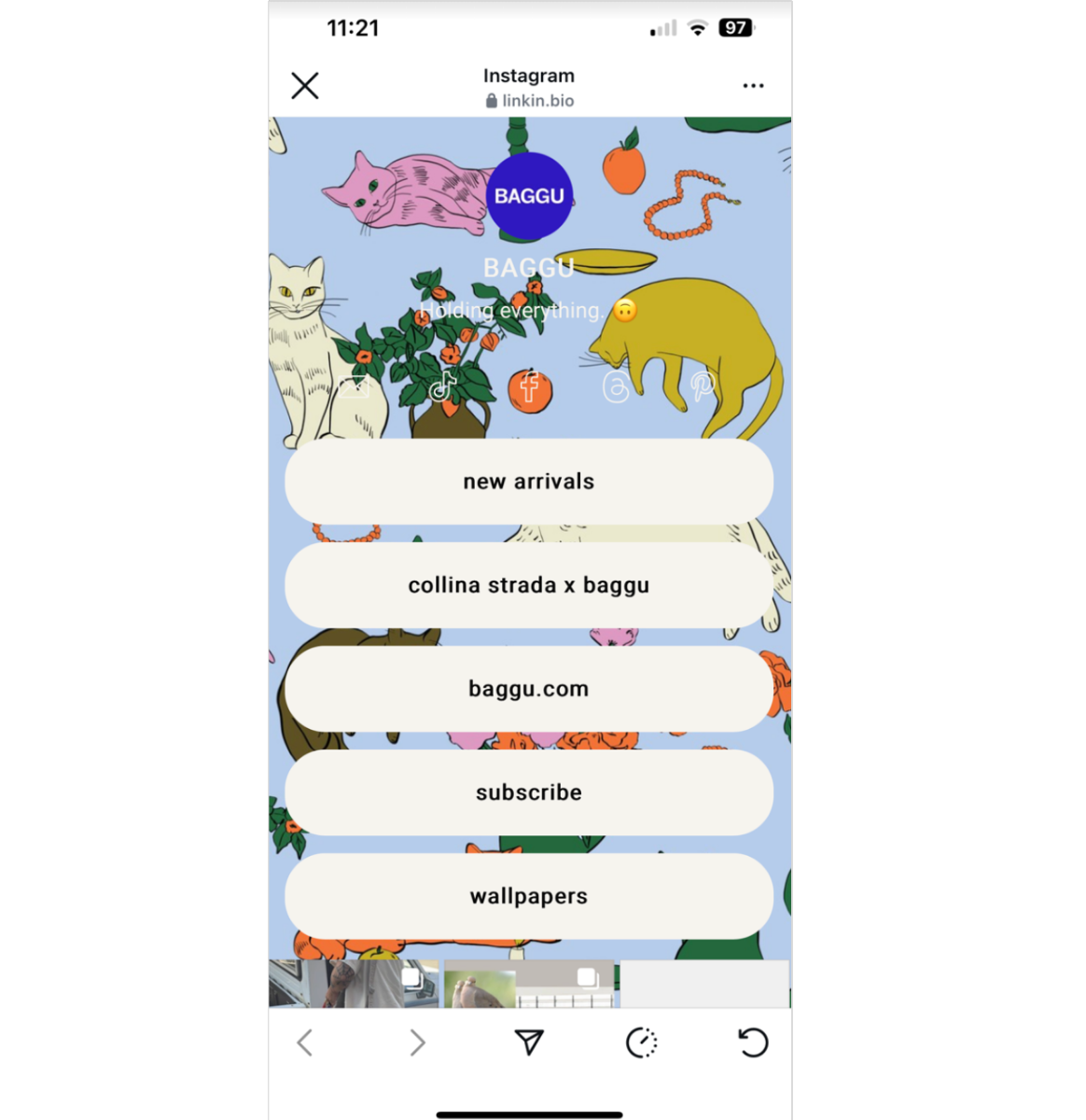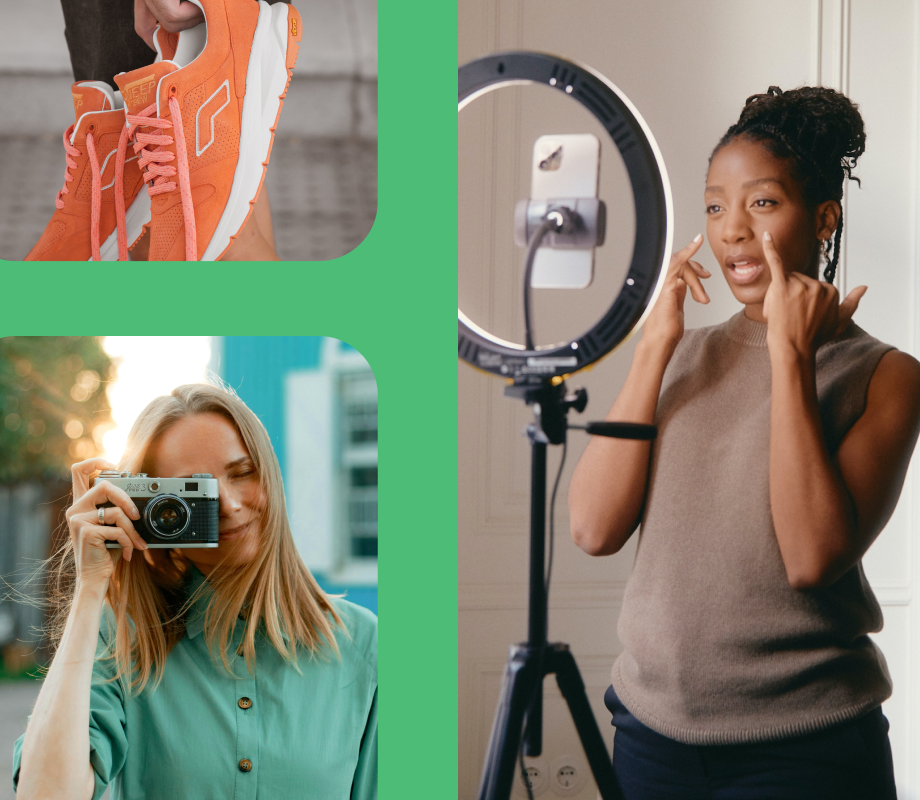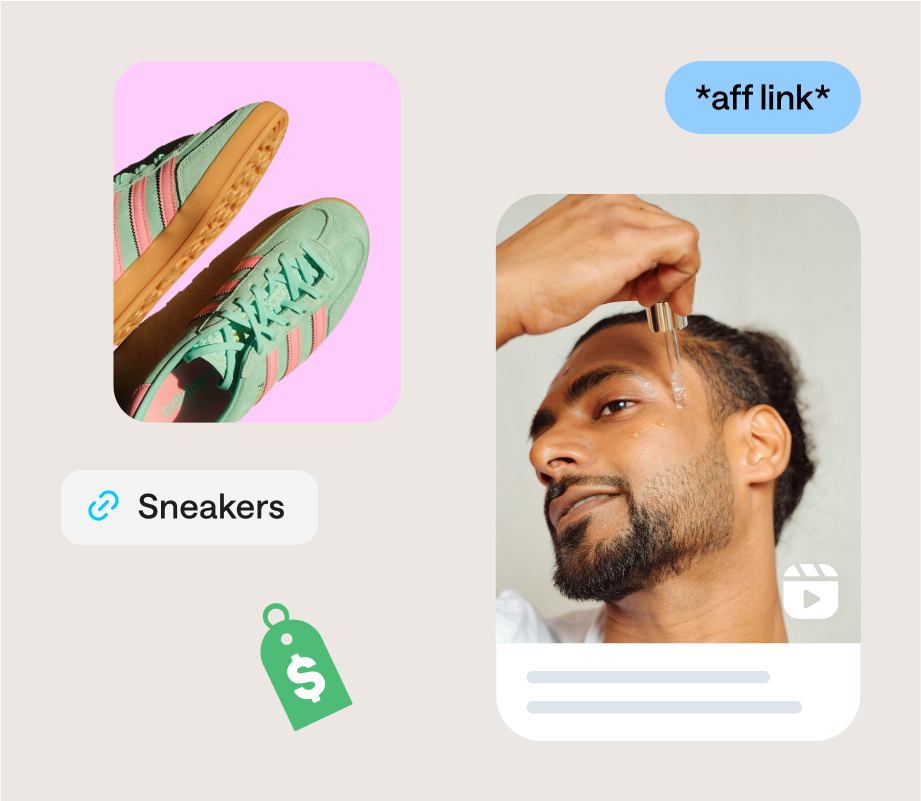Wouldn’t it be great if your social media posts were directly tied to revenue?
Welcome to social selling.
Selling on social media is not about posting ads and hoping for the best; social selling is a fundamentally different approach to revenue generation compared to traditional and other digital sales methods.
The key to success is understanding how social selling is unique, the key tools and platforms that empower it, and developing a social selling strategy that’s right for your organization.
Table of Contents
Join over 1 million marketers to get social news, trends, and tips right to your inbox!
Email AddressWhat Is Social Selling?
Social selling is a method of sales where you use social media platforms and networks to build relationships and understand prospective buyers before making a sales pitch.
This may include:
Direct engagement through comments, polls, and opinion posts;
Learning about potential customers using social listening;
Posting informational content to explain how your product or service helps customers; or
Inviting followers to learn about your brand through your link in bio.
Traditional Selling vs. Social Selling
Traditional selling is based on finding people who need what you offer and convincing them to buy your solution. This might involve cold outreach, calling, or even digital ads (paid or organic).
Social selling prioritizes building an audience on social media and educating them, building connections, and learning about people first, before making a sales pitch.
For example, Three Ships Beauty positions themselves as a fun brand while educating consumers about their Skin Hero product in this TikTok
Social Commerce vs. Social Selling
Social commerce involves directly selling products through social platforms—for example, using an Instagram Store or selling products in your Link in Bio.
Social commerce is a tool you can use as part of your strategy; however, social selling also involves positioning your brand to create relationships and lasting brand awareness rather than simply boosting your revenue.
E-Commerce vs. Social Selling
E-commerce sells things via an online store; for example, using a Shopify Store, Etsy, or an Amazon storefront.
It is a form of digital storefront rather than an approach to sales; social selling may be used by e-commerce brands and end in someone making an online purchase, but it’s a different process.
Are you an e-commerce brand interested in upping your social selling game? Learn more about how the Later Influence team works with e-commerce brands here.
Why You Should Care About Social Selling
Done right, social selling delivers a few key benefits for your business.
You Can Seriously Scale Up Your Sales
Social selling is a way to connect with and understand the billions of people who use social media daily, leading to an audience scale that would be difficult (or incredibly expensive) to build through other channels.
Influencer marketing, when used as part of your social selling strategy, adds even more fuel to this fire. For example, most (69%) consumers trust influencers, friends, and family over information directly from brands.
That means an influencer might generate more impact, even if they share the same message. Here’s an example of how Neutrogena works with brand ambassadors - or #NeutrogenaPartners - to promote new collections.
You Can Build Genuine Customer Relationships
Social media is a two-way street. Not only are you showing off your brand in posts and stories, but you can also talk to people in comments or DMs and answer questions in real time.
This builds stronger relationships that can convert not just into one-time sales, but overall customer loyalty.
One way to take this to a new level? Use a social listening tool to join conversations where your potential customers are to build relationships off your profile.
You Can Turn Social Media Into A Standalone Revenue Driver
A strong social selling approach results in actual revenue — meaning you can clearly demonstrate how investments in social media result in growth and sales.
If you’re using influencer marketing as part of your social selling strategy, you want to know how your campaigns impact the bottom line.
Later Influence provides real-time updates on the ROI and Earned Media Value of each campaign, saving you hours of data collection and reporting and proving the value of your campaigns. Learn more about ROI & EMV here.
The Platforms That Make Social Selling Possible
Social selling pros leverage a few different channels and platforms to make their strategy work. Here are the essentials that we recommend.
Influencer Marketing Platforms
Partnering with the right influencers means you can leverage their platforms and reach to amplify and sell your products and services.
The right influencer marketing platform makes it simple to find creators from different industries, manage your campaigns, communicate with creator partners, and analyze results.
Link in Bio
A well-planned Link in Bio page helps you feature products and promotions you talk about on social media.

With Link in Bio, you can promote key information about your brand and link relevant social posts from Instagram and TikTok to pages on your website for more information.
It’s the easiest way for your followers – and customers – to take their relationship with your brand beyond social.
A Best Time To Post Tool
Use a best time to post tool to find the perfect time to post for your audience, then schedule for each platform like Instagram, Pinterest, YouTube, or TikTok.
Knowing your custom best time to post helps you meet your audience where they’re at, making your post as visible as possible.
While you could calculate your best time by hand, we recommend experimenting with posts and channels at different times during the week and then using Later Social’s best time to post tool to determine when you get the highest engagement on each channel.
Social Commerce Shops
If your content includes product demonstrations or walkthroughs, think about selling directly with an in-platform shop like Instagram Store, TikTok Shop, or YouTube Shopping.
These platforms allow you to feature your products in more detail, providing a way for your social-savvy followers to try them out for themselves.
Social Listening Tools
Social listening helps you understand your audience and jump on trends, get in on conversations, and even get ahead of potential customer complaints.
Social listening helps you build those genuine relationships that we mentioned above.
Did you know that Later has an influencer marketing platform, a social media management tool, and a Link in Bio tool? Sign up for Later Social - or book a demo with Later Influence - to become a social selling superstar.
The Best Social Platforms for Social Selling
Any social platform where you can gather followers and engage with them will work for social selling!
That said, here are a few of the biggest platforms to leverage:
Instagram is a powerful platform for sharing videos and Reels, as well as relatable storytelling via Stories.
TikTok allows you to show off your creative side with videos by following trends or showing behind-the-scenes content about your business.
Pinterest is great for sharing infographics, rich graphics, and style inspo. (The perfect platform for retail brands!)
YouTube is strong for short and long video content. YouTubers have super-engaged communities, so connecting with YouTube influencers is a great way to create connections with niche audiences.
If your audience uses the platform, Facebook is a great way to start a private group for your biggest fans.
LinkedIn is typically used for business-to-business social selling, but more brands are using it to share knowledge and connect with Linked-influencers who share their work wisdom on the platform.
Whether you’re active on one platform or ten, the key is to use the right social media management tool to manage scheduling, posting, and analytics
How To Develop A Social Selling Strategy
A successful strategy will help you plan out, launch, and grow your approach to social selling—here are the steps.
1. Choose What You Will Sell
Social selling can be used by any brand, but is a great choice for:
When selling your brand, remember to sell the fundamental components of your brand first. Take Duolingo, for example. This brand sells itself on TikTok by making tongue-in-cheek jokes and doing trends in their signature owl suit.
While many of their videos have nothing to do with language learning, they sell the brand as fun, approachable and relatable – all of which speak to their product.
By focusing on selling your brand, you avoid situations where you feel compelled to always put out advertising messages to cover every product and service you offer.
It also helps to create content pillars, 2-5 topics that you can consistently post about as part of your brand. You can read more about content pillars here.
2. Identify The Platforms You Will Use
Success with social selling requires a product-content-platform match.
For example, a beauty product might do well via Instagram, while a self-organizer guide with checklists might do well via Pinterest.
You can see how a fashion-focused brand like SKIMS thrives on Instagram, especially considering its founder Kim Kardashian is one of the most successful Instagram creators.
To pick the platform(s) that work for your brand, think about:
What suits your product or service;
What platforms do your core audience and ideal customers use;
How you can best showcase your offering; and
Your brand style.
This will often help you find your primary platform. From there, think about repurposing—for example, a video made for TikTok can often be reposted as both Instagram Reels and YouTube Shorts.
3. Set Your Campaign Goals And Metrics
While social selling is about building your brand online, you’ll want to set some goals and that means having analytics set up.
Some of the metrics you’ll want to track include:
4. Find Influencer And Creator Partners
The right influencer partner can amplify your social selling efforts if they have a relevant audience and the content they share aligns with your product or service’s benefits.
To put it simply: It has to make sense for them to be promoting your products, or else their audience either won’t engage or might look negatively on your brand.
But with the right brand ambassadors, influencer marketing can take your brand to new heights (and new levels of revenue).
This is where tools like Later Influence can help. Not only does the platform help you find influencers but you can also manage communications, contracts, and payments in a single platform.
5. Plan And Launch Your Campaign
Planning and launching a social media campaign - or an influencer marketing campaign - takes work, but that work is always worth it.
First, identify how often you will share certain types of content from your content pillars AKA the different types of content you’ll focus on.
Second, finalize all collaborations with influencers. This might include:
Nailing down the core campaign message;
Adding supporting messages;
Finalizing content aesthetic; and
Identifying who is responsible for content creation and posting.
Once the content is ready, pick your launch date and go! Don’t forget to respond to comments, join conversations, and jump on Stories to stay top-of-mind beyond posting.
6. Review And Iterate
Social selling is an ongoing process of building relationships, growing brand awareness, and profiting off your results.
Just like any marketing strategy, it requires constant attention and adaptation. Regularly review your social selling tactics and tools to identify what's bringing in the results you want and what needs improvement.
Of course, this is a simple overview of what can be a complex process. Later’s award-winning Services team has the smarts to help you develop and scale your influencer marketing or social media program - learn more about Services here or book a call below.
Examples of Social Selling
If you’re looking for social selling inspiration, look no further!
Kylie Cosmetics
Kylie Cosmetics showcases products in stylized, beautiful settings, which shows the brand as a key part of a glamorous lifestyle.
They also leverage captions to announce relevant sales, giveaways, and more. Their audience comes for the aesthetics and stays for the products themselves.
Pottery Barn
Pottery Barn uses Instagram to showcase complete rooms or settings, giving prospective customers design inspiration and establishing themselves as a leader in interior design.
The company also ties into seasonal trends, such as decor for the Fourth of July or Christmas, showing off specific products or design patterns that match the aesthetic.
BAGGU
BAGGU sells handbags. To stand apart, BAGGU shows their product in multiple different contexts—on a hike, while riding horses, etc.—to showcase durability and flexibility.
Their Link in Bio page also makes it easy to find new arrivals, products coming soon, their full website, and special things like brand collaborations.

Grow Your Brand With Social Selling
Social selling gives you an opportunity to turn interesting content into sales. However, it’s not just posting and hoping for the best.
You need to develop a strategy that sets goals for your brand and executes them with the right tools, content, and partners. This is where influencers come in, since you can leverage their credibility, audience, and trusted relationships to help supercharge your brand.
The key to success with influencers and social selling is having a comprehensive tool that helps you identify the right partners, design your campaign, and measure impact.
Book a demo with Later Influence to see how the platform can help you manage end-to-end campaigns, and sign up for Later Social to make scheduling, posting, and social analytics easy for everyone.



Social Selling Pitfalls To Avoid
Here are a few issues you want to avoid as you build, launch, and grow your social selling approach.
Not Delivering Value Before Asking For The Sale
Your audience won’t buy from you without you showing them value. Simply posting “Buy now, big sale!” won’t work.
Make sure you not only educate consumers but also learn about your audience through post engagements. Then use that insight to craft compelling, value-focused content before asking them to buy.
Working With The Wrong Influencers
You need influencers with the right audience and professionalism to match your brand. This is where a pre-contactable pool of influencers is so important to save time and headaches.
Posting Disconnected Or Irrelevant Content
Make sure all content is connected to your brand identity and trends your audience might like — then think about your call to action.
For example, a picture of the sun with a caption that says “Link in bio!” is not likely to convert. (Unless, of course, that’s a well-known inside joke in your community!)